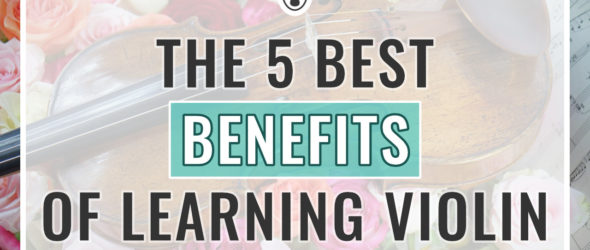As an adult, there are many benefits of learning violin. Although many people pick up a musical instrument as children, exploring the violin as an adult is rewarding in so many ways. You might have a very specific taste in music and know exactly what you’d like to learn; You’ll be self-driven: you probably don’t have a parent pushing you to learn against your will!
And if you wonder if it is ever too late to start learning, read my honest answer.
To me, the violin is a great source of joy, and being able to sit down and play my favorite music enriches my life. Playing the violin has so many advantages, both mental and physical. Today I’m sharing with you my favorite benefits that come from learning the violin.
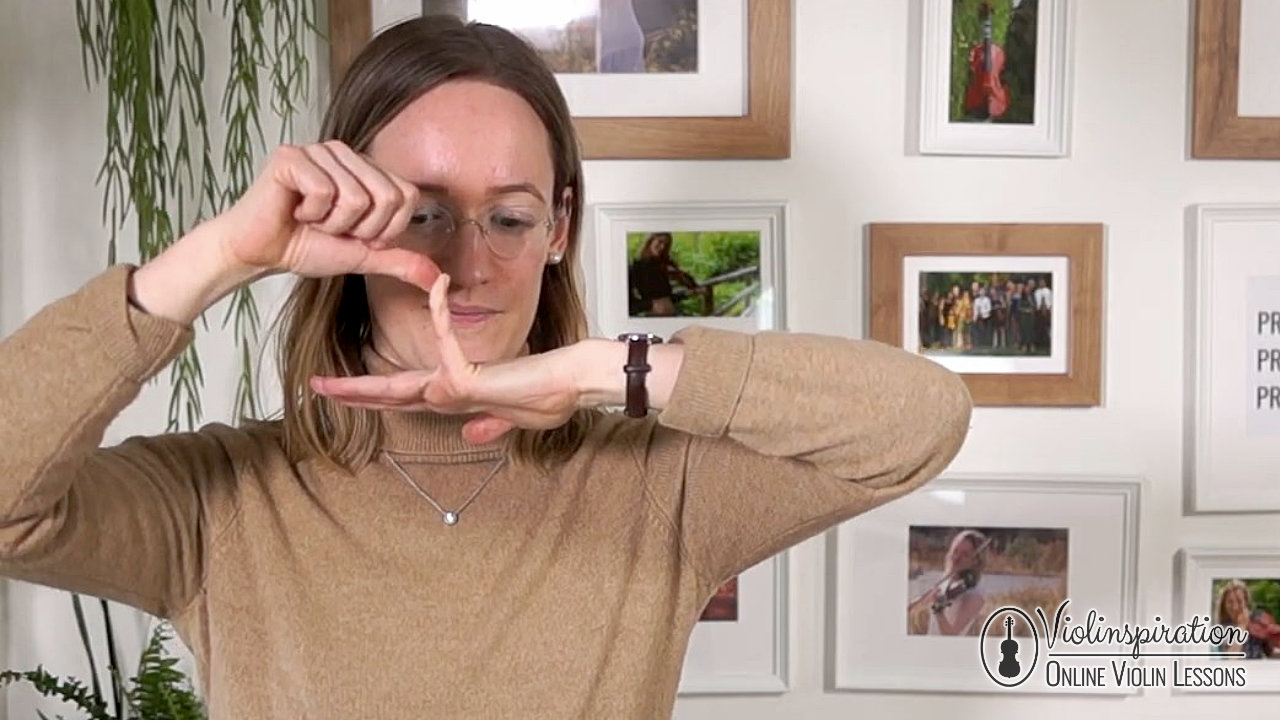
Benefit 1: A Workout for Small Muscles
Did you know that you actually burn calories when you play the violin? Don’t believe me? Watch this entertaining video by TwoSetViolin!
Calorie-burning benefit aside, playing the violin is also a great workout for the small muscles in your left and right hands! Playing fast notes on the fingerboard will help build finger dexterity and fine motor skills in your left hand. Holding the bow correctly will show the same benefits in your right hand.
Playing the violin can even help alleviate some of the pain associated with arthritis! Physically playing a musical instrument can help improve your agility and regain strength in your affected muscles, not to mention that just listening to music is therapy itself!
Just like any other workout, it’s important to ease into and out of playing. Here are some stretches that have helped me avoid pain while playing, and have increased my stamina! These stretches will also help you become more flexible, specifically in the muscles we use to play the violin.
Playing the violin is a great way to meet new people and form friendships. The violin is a melody instrument, so it can be played by itself (solo) or in a group with other musical instruments.
While the violin sounds beautiful on its own, it can be very intimidating to create an enjoyable sound all by yourself. With even just a little knowledge of the violin, you can play with others and create fun, beautiful music! The social benefits are great: you can engage with others and enjoy live music with your friends and family.
There are so many different types of groups you can play with as a violinist:
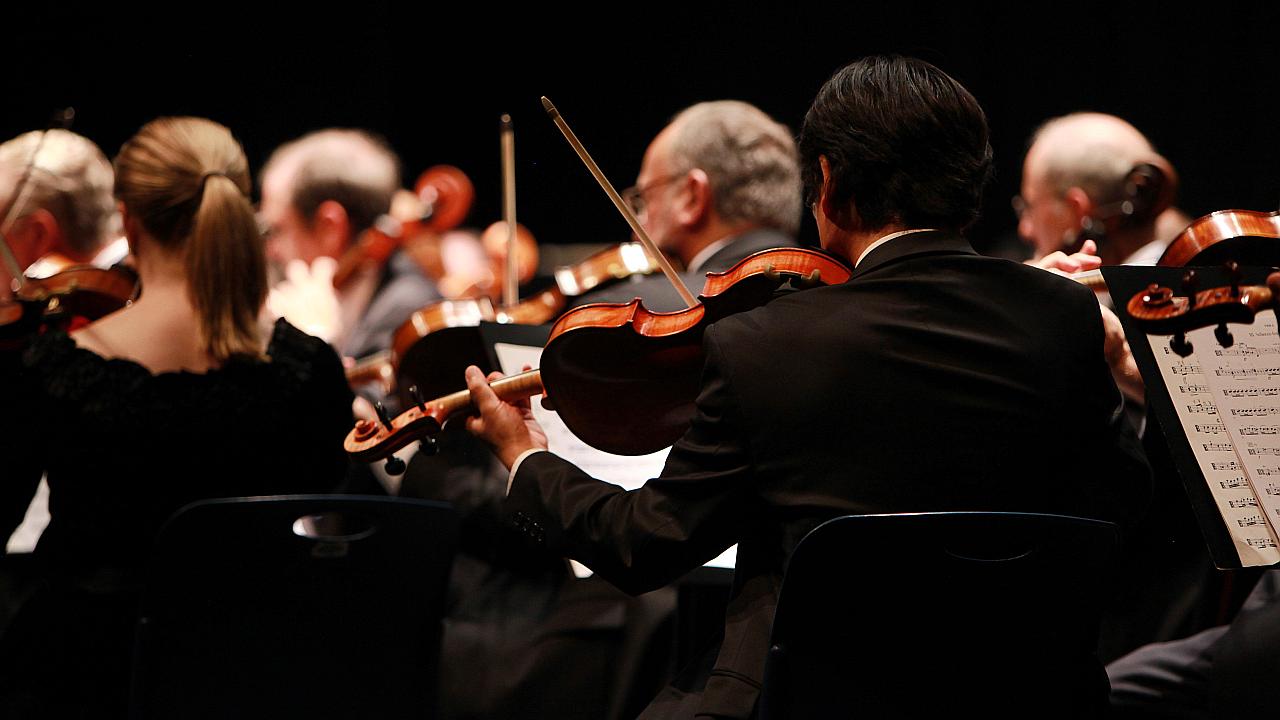
Orchestra
The violin is inherently a classical instrument, and playing in an orchestra is a very natural progression for those learning the instrument. Orchestras can be made up of either just string players or every type of instrument. Many areas are home to community orchestras meant for adult amateurs. Playing in an ensemble like this can be an incredibly rewarding and fun activity!
At Violin Villa, my violin camp in the Netherlands, we create our own orchestra, bringing together players from different backgrounds to perform beautiful group pieces.
Whether you’re a beginner who has been playing for just a few months or an intermediate player looking for more challenges, there is always a suitable part for you. It’s a chance to experience the joy of playing in an ensemble, improve your listening and coordination skills, and connect with fellow violinists in a supportive setting. For many, this is their first taste of orchestral playing, and it often sparks a love for ensemble music that continues long after the camp ends.
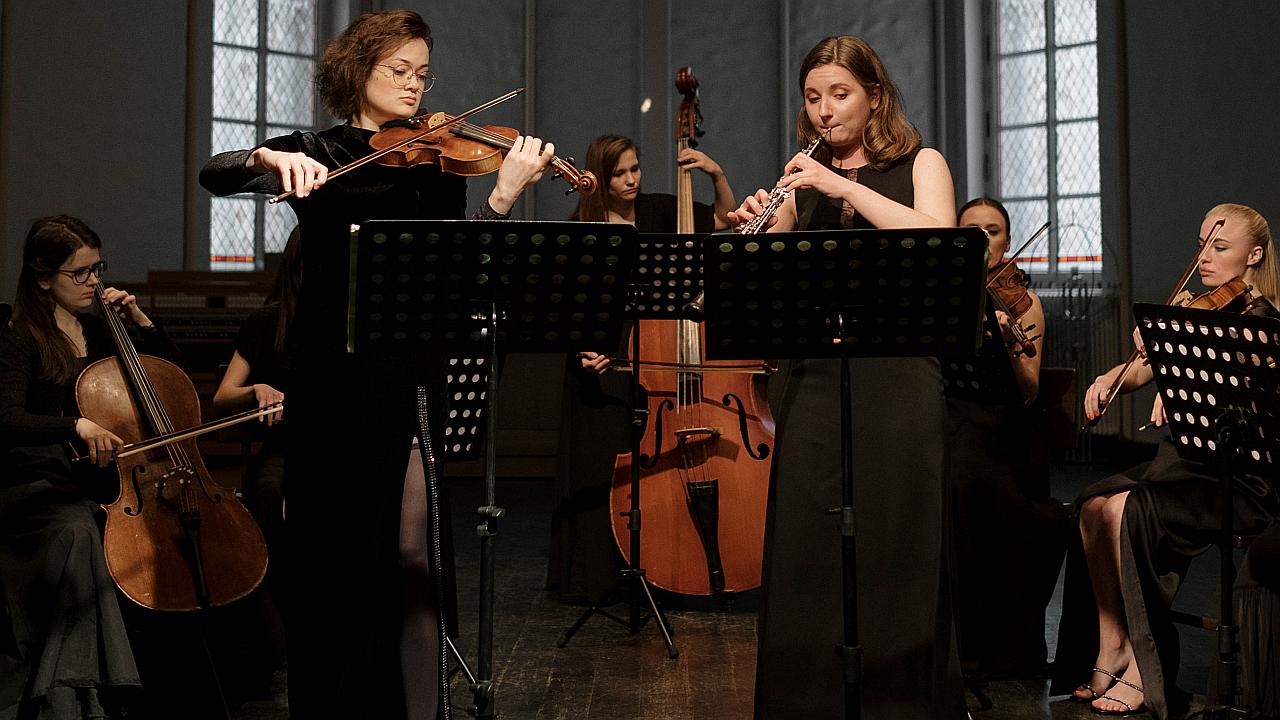
Chamber Groups
These are small groups (usually 3-6 people) who play classical music together. Some fun combinations include violin, piano, and cello; or two violins, viola, and cello (this grouping is called a string quartet).
Folk Music
There are always groups of people getting together to play folk music. Depending on where in the world you live, you’ll hear different types of folk music. My favorite style is Celtic folk music. I mention a few easy Celtic tunes you can learn in this article. Learning these by yourself is a great way to prepare before playing with others.
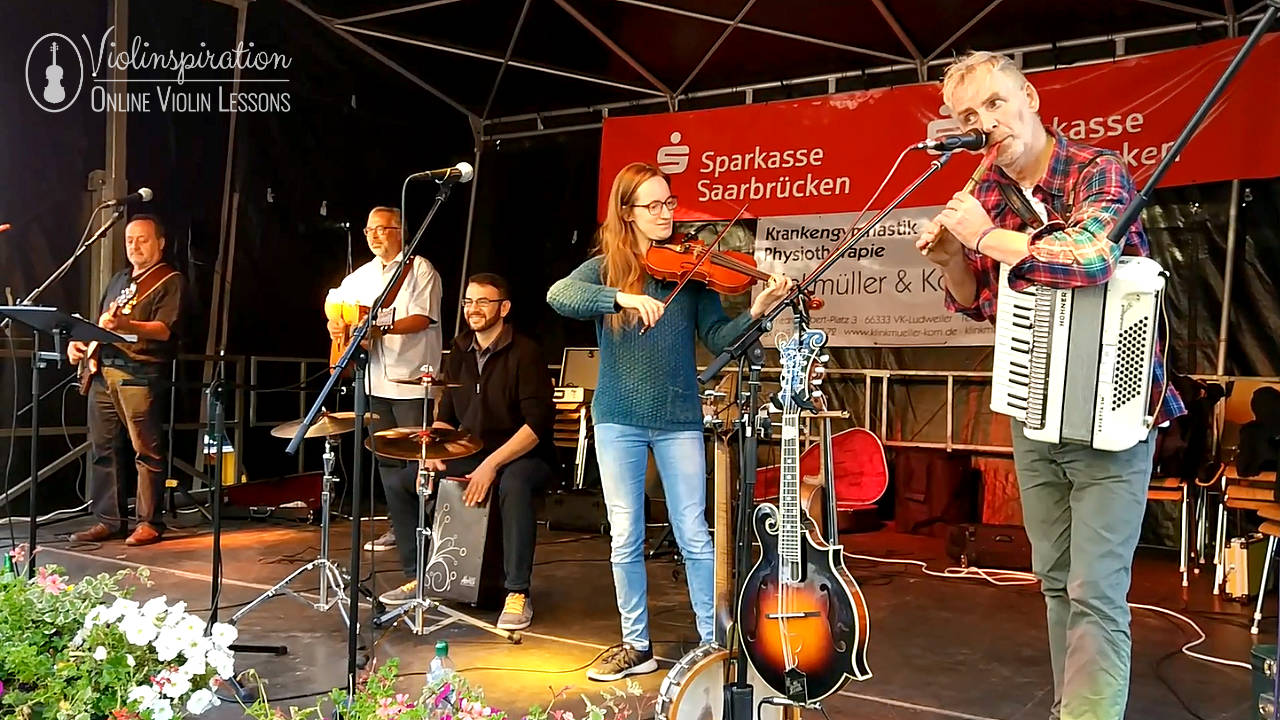
Jam Sessions
If you have friends who play a musical instrument, get together for a jam session or find online a jam session that you could join! It doesn’t matter what they play–any combination of instruments can sound good together, and as long as you’re playing music you all enjoy, it’s a fun time.
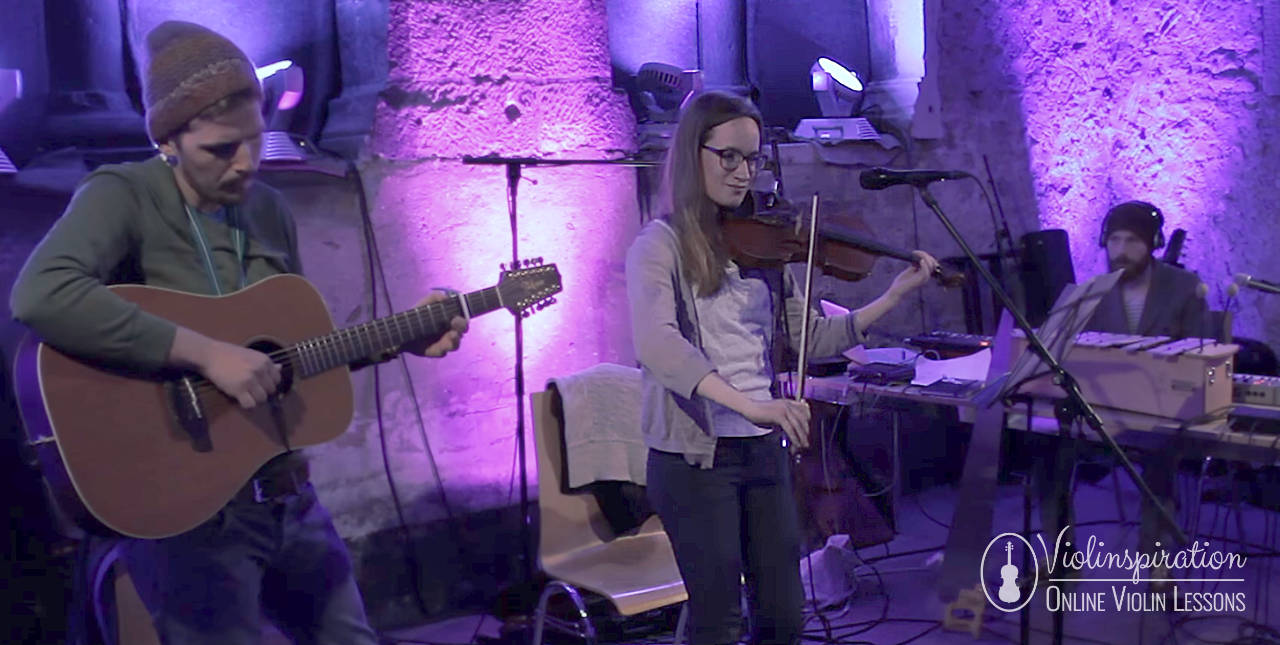
Violin Duets
Do you have another friend learning the violin? You can play music together! Here are some great songs that two violinists can play together. Have a friend with a cello? Check these duets.
Playing with others and knowing that you’re a part of something bigger than just yourself can feel so rewarding, especially if you’re playing a genre of music that you really love.
Benefit 3: Creative & Emotional Outlet
After a long day of work, I sometimes need a way to express myself or to process emotions that I’ve felt throughout the day. Picking up my violin and playing a favorite song can be so satisfying!
After learning a bit of violin, you’ll be able to play songs for any mood that you feel, which can help release emotions and stress. Of course, playing the violin can sometimes cause stress, but if you focus on making music that conveys emotion instead of performing each note perfectly, playing violin can be very relaxing!
Practicing the violin and playing the violin for fun are two very different things. When we practice, we focus on playing the right notes, using the correct techniques, and making good sounds. When we play for fun, we focus on enjoying the violin music we’re creating and portraying characters and emotions for others to hear.
If you never feel fun when practicing, I hope this video will help you:
Are you looking for new tunes to learn and express your emotions through them? Have a look at my song library, I hope you’ll find there many new ideas!
Benefit 4: Mental Stimulation
As we age, it’s great to have a hobby that keeps our brains from deteriorating, and learning the violin is a fun way to stimulate your mind. In addition to playing your favorite music, you’ll be strengthening your brain functions and memory, and you might see an improvement in your hand-eye coordination!
Learning tricky finger patterns can feel like saying tongue twisters with your hand! It’s a great mental exercise to stretch your brain and learn something difficult. Etudes (short musical pieces that focus on one or two specific techniques) are great if you’re looking for a mental challenge. A good etude always keeps me on my toes!
In addition to the mental benefits, there’s always something new to achieve on the violin. As you improve, you’ll find new goals you’d like to reach, and new songs you wish to play. It’s like a video game with no end – you can play forever!
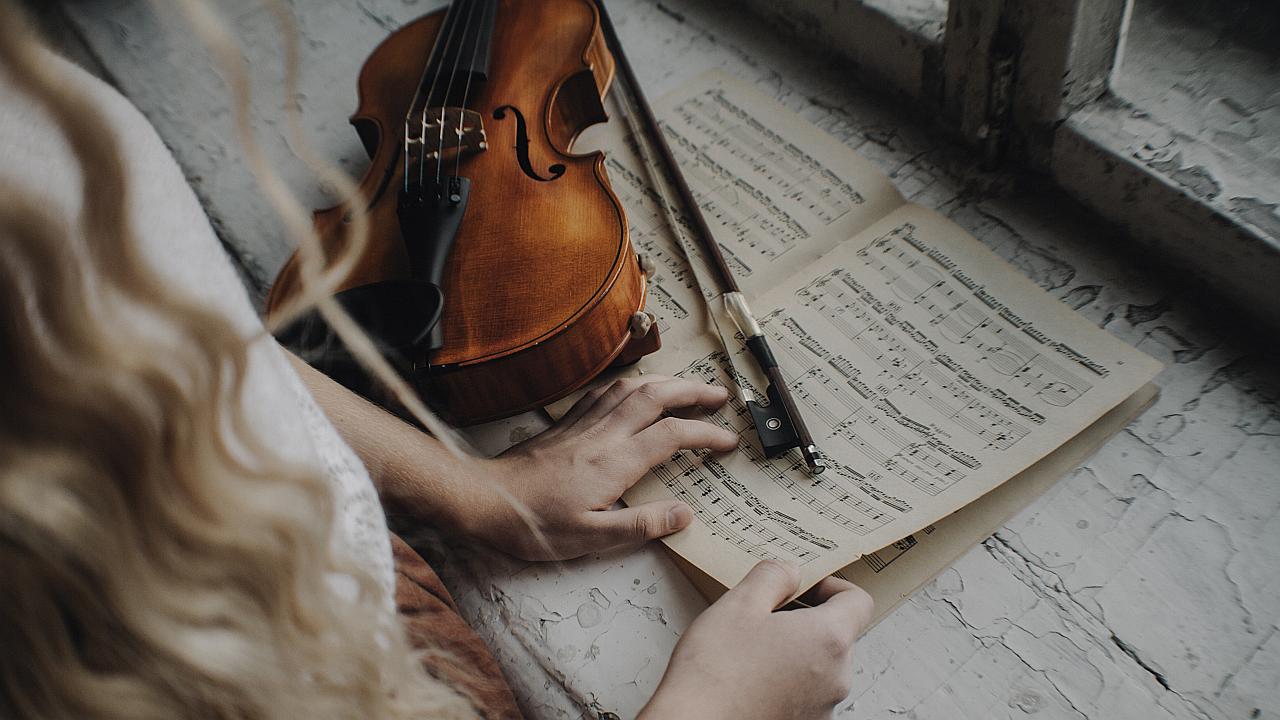
Benefit 5: Teaches You Life Lessons
Becoming a violinist takes a lot of consistent practice. Working hard at something that progresses slowly can teach you patience and dedication.
Learning to play violin and read music is rewarding, but it doesn’t happen overnight. It’s a slow, methodical learning process that requires a lot of thinking and repeated work. Focusing intently on this tedious process can help you appreciate other slow things in life, and the instant gratification you do find in your life will feel even more rewarding and fast!
As you study the violin, you’ll quickly find it has lifelong benefits that carry over into many aspects of the human experience. I talk about also in my other blog post, 3 Life Lessons from 15 Years of Playing the Violin.
Other Great Benefits of Learning Violin
In addition to the great benefits, I’ve already discussed, learning how to play the violin can help you in many other facets of your life. Here are a few other added advantages that come with playing the violin.
Habit Building
Practicing the violin regularly is such a good way to see how habits are built. It really does pay off in the end!
Without consistent practice, you won’t notice much improvement in your violin playing. However, if you’re able to practice consistently, you’ll notice steady progress in your musical instruction.
Finding the motivation to practice, and even knowing what to practice, can be difficult for beginner musicians. I have a helpful guide all about practicing the violin, which includes a fillable practice plan download to help you get started. In the article, I also talk about some good practice habits, including tips for practicing consistently (never miss a day of practice!), and how to work through difficult sections of your violin music.
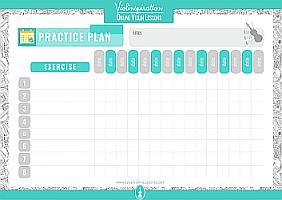
Fillable Practice Plan [PDF]
Moreover, when you learn to build one habit, you can transfer it to other aspects of your life, e.g. change your diet, start writing or do physical exercises – you name it!
A Comforting Constant
I love playing the violin. I love feeling the vibration of the instrument against my body, and playing my favorite music brings me so much joy. Knowing that I can take my violin at the end of the day and make my own music is so comforting.
It’s similar to reading a good book. You finish a chapter at the end of the day, and later on, you pick up the book where you left off. If you live a life of instability, coming back to the violin every day can feel so comforting, like revisiting a favorite story over and over again.

Conclusion
The violin offers so many more benefits than just the few I mentioned today. Everyone takes away something a little different from their experience with music, which I think is really beautiful. It’s one of the things that makes music so special!
Playing the violin is full of both mental and physical benefits. Music education is so helpful to people of all ages, not just children. It’s never too late to start learning the violin or any other musical instrument! And if you’re ready to start your violin journey, click here and become a student of Julia’s Violin Academy.
